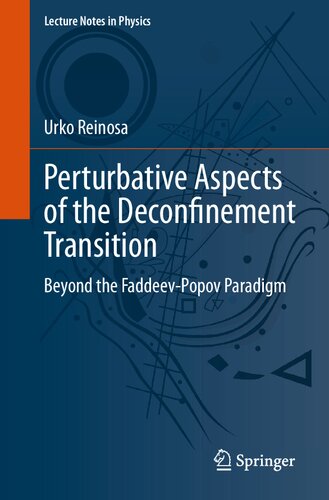

Most ebook files are in PDF format, so you can easily read them using various software such as Foxit Reader or directly on the Google Chrome browser.
Some ebook files are released by publishers in other formats such as .awz, .mobi, .epub, .fb2, etc. You may need to install specific software to read these formats on mobile/PC, such as Calibre.
Please read the tutorial at this link: https://ebookbell.com/faq
We offer FREE conversion to the popular formats you request; however, this may take some time. Therefore, right after payment, please email us, and we will try to provide the service as quickly as possible.
For some exceptional file formats or broken links (if any), please refrain from opening any disputes. Instead, email us first, and we will try to assist within a maximum of 6 hours.
EbookBell Team

4.1
80 reviewsThis book offers an original view of the color confinement/deconfinement transition that occurs in non-abelian gauge theories at high temperature and/or densities. It is grounded on the fact that the standard Faddeev-Popov gauge-fixing procedure in the Landau gauge is incomplete. The proper analysis of the low energy properties of non-abelian theories in this gauge requires, therefore, the extension of the gauge-fixing procedure, beyond the Faddeev-Popov recipe.
The author reviews various applications of one such extension, based on the Curci-Ferrari model, with a special focus on the confinement/deconfinement transition, first in the case of pure Yang-Mills theory, and then, in a formal regime of Quantum Chromodynamics where all quarks are considered heavy. He shows that most qualitative aspects and also many quantitative features of the deconfinement transition can be accounted for within the model, with only one additional parameter. Moreover, these features emerge in a systematic and controlled perturbative expansion, as opposed to what would happen in a perturbative expansion within the Faddeev-Popov model.
The book is also intended as a thorough and pedagogical introduction to background field gauge techniques at finite temperature and/or density. In particular, it offers a new and promising view on the way these techniques might be applied at finite temperature. The material aims at graduate students or researchers who wish to deepen their understanding of the confinement/deconfinement transition from an analytical perspective. Basic knowledge of gauge theories at finite temperature is required, although the text is designed in a self-contained manner, with most concepts and tools introduced when needed. At the end of each chapter, a series of exercises is proposed to master the subject.